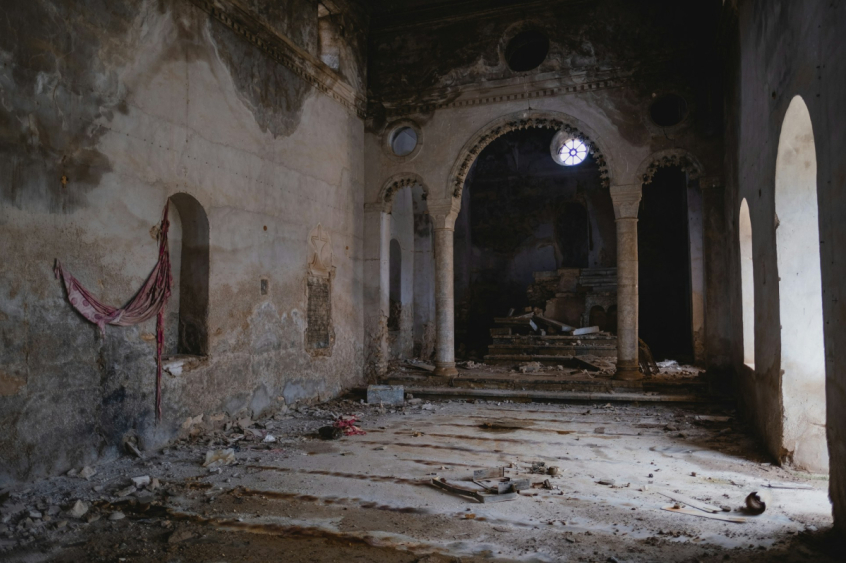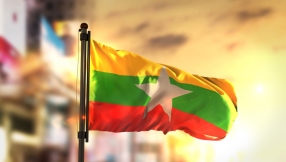
August 2024 marks the 10-year anniversary of the Islamic State group's genocide, in which thousands of people from Iraq's marginalized communities, including Yazidis, Christians and Shiite Muslims, were killed in Iraq's second-largest city, Mosul, and the surrounding areas.
The Yazidis, who follow a monotheistic religion, in which the Peacock Angel is chief among seven divine beings, and have been persecuted periodically in the past, suffered gravely. From 2014 to 2017, at least 5,000 were brutally killed, while 6,000 women and children were enslaved; hundreds of thousands were displaced from Sinjar and the Nineveh Plains, near Mosul.
Iraq's Assyrian Christians, who belong to a native Mesopotamian community consisting of early converts to a Syriac form of Eastern Christianity, also suffered under IS. In Mosul, IS marked Christian homes and forced them to either pay jizya, a tax historically levied upon non-Muslims, leave or be killed.
Even Muslims, particularly Shiites, whom IS deemed heretical for their adherence to forms of Islam beyond the narrow version of Sunni Islam the group espoused, were killed. While Shiite Muslims are a majority in Iraq, they are a minority in Mosul and the north, which is dominated by Sunni Muslims.
Iraq is the land where I was born. During a visit in the summer of 2016, I was able to see IS men from an ancient monastery atop a mountain near Mosul, which was especially troubling. Although IS was mostly defeated by Iraqi forces, in combination with a broader international coalition led by the United States, the consequences of the genocidal violence it perpetrated are ongoing.
In particular, Yazidis and Christians continue to suffer marginalization, the regions they inhabit remain unstable, and their heritage is subject to ongoing destruction. As a scholar of Iraq, I have a particular concern about the loss of intangible heritage such as prayers, songs and historic narratives – which I am now working to preserve.
Since the 2003 US-led invasion of Iraq, political parties in power have operated on a sectarian basis to marginalize minorities such as Christians and Yazidis.
The number of Christians in this area has dwindled from 1.5 million in 2003 to a few hundred thousand today. Other Islamic fundamentalist groups such as al-Qaida also targeted Christians, before IS did. The Alliance for Iraqi Minorities, a nonprofit based in Iraq, reported that 1,200 Christians were killed from 2003 to 2014.
Part of the reason for their suffering is that the region they have historically occupied, especially the Nineveh Plains, is coveted for its resources. It is rich in oil and also holds some of the most significant heritage of Iraq's early, pre-Islamic cultures.
Yet, it also holds special value for Iraq's Assyrian Christians. Nineveh and surrounding areas such as Nimrud and Alqosh have important artifacts, monasteries and church complexes, which date to Christianity's earliest periods. These areas were once part of Mesopotamia, a crucible of civilization, and contain a rich legacy of medieval literature, preserved in valuable manuscripts dating as far back as the fifth century.
Also adjacent to the Nineveh Plains is Lalish, the holiest sanctuary of the Yazidis. Within it lies the 12th-century shrine of Sheikh Adi, who is revered as an influential holy figure in the Yazidi faith.
These communities draw their cultural identity from this history. For the Assyrians Christians, the ancient Mesopotamian inheritance, including Christianity, is intertwined with a unique oral heritage that includes songs, folktales, recipes and tools for crafts preserved for centuries by local villagers as part of their now endangered Aramaic language and culture.
The language of farming used by these communities retains some influences from the Akkadian language used by the ancient Mesopotamian empires. For instance, in the dialect of the town of Baghdeda, in the Nineveh Plains, the word for storeroom of grains is "bakhshima" in Aramaic, which is a close descendant of the "bet hashiimi" in Akkadian for barn.
Preserving heritage
Even before the emergence of IS, rural and ethno-religious communities that did not occupy a central position of power were subject to the state's neglect and inadequate preservation of their heritage. In particular, Arab nationalist governments such as the Ba'ath, which held power in Iraq from 1968 to 2003, destroyed the villages of Assyrian Christians, forcing their displacement to large urban majority centers in Iraq. The Yazidis were similarly targeted.
Throughout the 20th century, Iraq's national libraries and museums have shown scant interest in representing the heritage of provincial and rural communities.
IS brought more destruction. Churches and shrines, cultural institutions and ancient heritage – including the city of Nimrod – were destroyed by IS. Those charged with preserving the heritage, along with other community members, were displaced from their towns and villages or killed. Some 400,000 Yazidis and about 200,000 Christians were expelled from the region between 2014 and 2017.
In the process, IS also erased memories of communities that would be passed to future generations. The damage was particularly severe for the Yazidi community, as it lacks textual scriptures; and for both communities, many traditions were passed down orally by men and women – often themselves illiterate – in the many languages of the region.
The aim of IS, as my colleagues and I found, was to erase not only these communities themselves but also the forms of intercommunal coexistence that had characterized northern Iraq historically. Many of the religious sites IS targeted were revered by multiple religions. For instance, Mosul's Mosque of Nabi Yunis was built on the site of a Christian church believed to be the shrine of the biblical Prophet Jonah. According to the Bible, Jonah was instructed by God to save the Ninevites. IS's destruction of this site revealed an Assyrian palace underneath the church-turned-mosque, which was dedicated to Jonah.
The path forward
Our current project documents the intangible and textual heritage of both Yazidis and Christians. The oral heritage often uses ancient languages and dialects – especially the endangered Near Eastern neo-Aramaic dialects spoken by Christians. We also document the Kurmanji version of Kurdish spoken by Yazidis.
The memories and narratives are significant not only for Yazidis and Christians but for the pluralistic history of the northern region and of Iraq as a whole. One example is "Dazike Batzmie," or the "Blessing of the String" – a sacred white-and-red string spun from wool and worn by Yazidis for good luck.
Another is the pokhin – a mixture made from seven grains plus salt, eaten during the conclusion of the "Rogation of Ninevites," a fast by Assyrian Christians in remembrance of Jonah and their repentance before God. It is believed that those who fast will have prophetic dreams, and the salty pokhin mixture will help thirsty single people to dream of their future soulmates.
Alda Benjamen is Assistant Professor of Middle East History at the University of Dayton.













